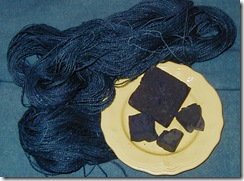indigo powder dye
The Art and Science of Indigo Powder Dye
Indigo powder dye, derived from the leaves of the Indigofera plant, has been a favored natural dye for centuries. Its rich, deep blue color has adorned textiles, art, and even skin in various cultures around the world. The journey of indigo powder dye, from plant to pigment, reflects both the artistry and the science of dye-making.
The Historical Significance
Indigo has a storied history that dates back thousands of years. Evidence of indigo dyeing has been found in ancient civilizations such as the Egyptians, who used it for mummification textiles, and the Chinese, who have employed indigo in their intricate garments for millennia. In India, skilled artisans known as dye workers have perfected the craft of indigo dyeing, creating complex patterns and patterns on fabrics through tie-dye techniques such as bandhani. The use of indigo spread across the globe, influencing fashion trends and textile arts.
During the 18th century, indigo became a significant commodity in the global trade network. The demand for the blue dye led to the establishment of indigo plantations, particularly in the Americas and the Caribbean. This period also saw the dark side of indigo production, as the profitability of the dye often relied on the exploitation of enslaved labor. The socio-economic implications of indigo dye production are a poignant reminder of the connections between art, commerce, and ethics.
The Science of Indigo Dye Extraction
Indigo dye is unique in that it undergoes a fascinating chemical transformation during the dyeing process. The leaves of the Indigofera plant contain a compound called indican, which is converted into indigo dye through a process of fermentation and oxidation. To create indigo powder, the leaves are harvested, fermented to break down the indican, and then oxidized to produce the vibrant blue pigment.
This chemical reaction occurs in several steps. Initially, when the leaves are steeped in water, enzymes break down the indican, resulting in leucoindigo, a clear, yellowish liquid. This liquid is then exposed to air, allowing oxidation to occur. As it oxidizes, leucoindigo converts back to the solid indigo pigment, which is then precipitated out and collected. Finally, the indigo is dried and ground into a fine powder, ready for use.
indigo powder dye

Applications and Techniques
Indigo powder dye can be used in various applications, primarily in textile dyeing. One of the most popular methods of dyeing with indigo is the vat dyeing technique, where the fabric is submerged in a reduced indigo solution. The initial color seen by the dyer is yellowish-green because of the leucoindigo, but as the fabric comes into contact with air, it transforms into the iconic blue hue.
Artists and craftspeople often use indigo powder not only for traditional fabric dyeing but also in contemporary art forms, organic farming, and even cosmetics. The allure of indigo in the modern world is not just due to its aesthetic appeal but also because it is a biodegradable and natural alternative to synthetic dyes, which can often be harmful to the environment.
Conservation and Sustainability
As the world shifts toward more sustainable practices, the revival of natural dyes like indigo is gaining momentum. The environmentally damaging effects of synthetic dye production have led many designers and consumers to seek out eco-friendly alternatives. The use of indigo offers a sustainable option, particularly when sourced from organic farms.
In recent years, there has been a resurgence of interest in traditional indigo dyeing practices. Workshops and educational programs enable artisans to pass down their skills and knowledge, ensuring that these techniques are preserved for future generations. Additionally, the push for greater sustainability in the fashion industry has given rise to numerous brands that specialize in natural dyes, promoting ethical production methods.
Conclusion
Indigo powder dye is more than just a color; it embodies a rich tapestry of cultural heritage, scientific wonder, and environmental consciousness. As we continue to explore the intersections of art, science, and sustainability, indigo will undoubtedly remain a cherished part of our creative narrative. Whether in the form of beautifully dyed fabrics or as part of an eco-friendly lifestyle, indigo powder dye continues to inspire and influence, bridging the past and the future in a vibrant hue.
-
Thermal Stability Analysis of Bromo Indigo Pigments
NewsJun.06,2025
-
Sulphur Black Dye Oxidation Process Optimization
NewsJun.06,2025
-
Lightfastness Testing of Bromo Indigo Dyed Denim
NewsJun.06,2025
-
Granule Size Distribution and Jeans Color Uniformity
NewsJun.06,2025
-
Gradient Dyeing Methods with Indigo Blue Granules
NewsJun.06,2025
-
Dyeing Temperature Effects on Sulphur Black Color Fastness
NewsJun.06,2025
-
Sulphur Black Dyes in Daily Use
NewsMay.07,2025

Sulphur Black
1.Name: sulphur black; Sulfur Black; Sulphur Black 1;
2.Structure formula:
3.Molecule formula: C6H4N2O5
4.CAS No.: 1326-82-5
5.HS code: 32041911
6.Product specification:Appearance:black phosphorus flakes; black liquid

Bromo Indigo; Vat Bromo-Indigo; C.I.Vat Blue 5
1.Name: Bromo indigo; Vat bromo-indigo; C.I.Vat blue 5;
2.Structure formula:
3.Molecule formula: C16H6Br4N2O2
4.CAS No.: 2475-31-2
5.HS code: 3204151000 6.Major usage and instruction: Be mainly used to dye cotton fabrics.

Indigo Blue Vat Blue
1.Name: indigo blue,vat blue 1,
2.Structure formula:
3.Molecule formula: C16H10N2O2
4.. CAS No.: 482-89-3
5.Molecule weight: 262.62
6.HS code: 3204151000
7.Major usage and instruction: Be mainly used to dye cotton fabrics.

